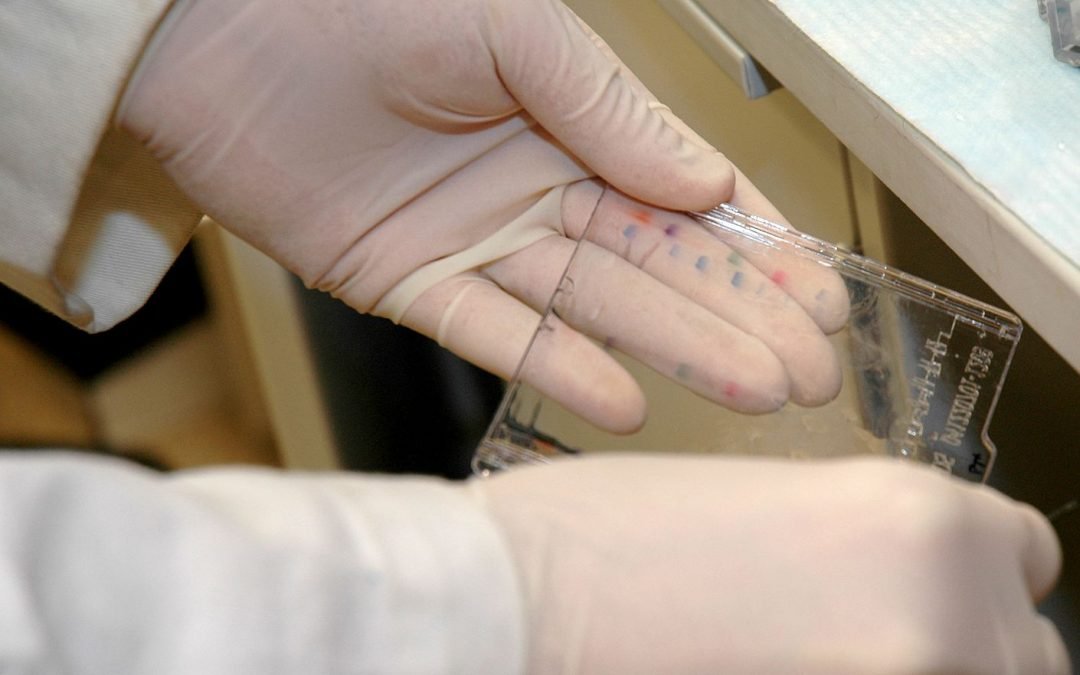New approaches to Western blotting techniques overcome performance limitations
For over 40 years, researchers have used Western blot for protein identification. Not only does Western Blot provide confirmation that a target of interest is present in a sample, this technique also offers visual proof of antibody specificity. For this reason, Western blot remains one of the most widely used methods for antibody validation. In its conventional form, this technique involves a slow, labor-intensive workflow and often presents challenges producing quantitative results. However, the Western blot technique is being continually updated to overcome these limitations and extend its utility.
Conventional Western Blotting Technique
During a conventional Western blot, samples, usually cell lysates or tissue homogenates, are loaded onto a polyacrylamide gel and separated by electrophoresis. They are then transferred to a nitrocellulose or polyvinylidene fluoride (PVDF) membrane for antibody-based detection. This typically involves blocking the membrane with milk, bovine serum albumin (BSA), or a commercial blocking agent, prior to incubation in a dilute solution of the primary antibody. After a series of washes to remove any unbound antibodies, a labeled secondary antibody is added to enable target detection. Detection can be either chemiluminescent, using antibodies labeled with horseradish peroxidase (HRP), or fluorescent, which provides opportunities for multiplexing.
Limitations to Established Methods
Conventional Western blot has a slow, manual workflow, and can take upwards of a day to produce results. This technique also risks irreproducibility due to the high number of protocol steps involved, requiring large (microgram) amounts of both sample and antibody and rigorous optimization to yield quantitative results. Despite these drawbacks, conventional Western blot is still widely used, since it is readily implemented, relatively inexpensive, and produces understandable data.
Evolution of Western Blotting
In recent years, Western blot has improved in speed, sensitivity, and throughput. In addition, its reproducibility has improved with significant efforts toward increasing the accuracy of quantitative analysis. Instead of listing the countless improvements to the individual Western blot components, we have chosen to highlight some of the emerging technologies being developed to advance the conventional Western blotting technique:
Capillary and Microchip Electrophoresis (MCE)
Capillary and microchip electrophoresis has been investigated since the early 1990s as a means of separating biomolecules at high speed. Of the various methods developed, the leading approach involves performing electrophoretic protein separation on a microchip as it moves across a PVDF membrane, which captures proteins as they leave the chip. In 2016, Jin et al. updated the method to allow multiplexed protein detection, whereby the sample is deposited in separate tracks that are subsequently probed with different antibodies. This was shown to resolve proteins with just a 5% difference in molecular weight – for example, ERK1 (44 kDa) and ERK2 (42 kDa) – while keeping separation and blotting times to less than 8 minutes.
Automated Western Blot Processors
Automation offers many advantages, including higher sample throughput, improved experimental reproducibility, and reduced hands-on time. It can also mitigate the risk of experimental cross-contamination. Automated Western blot processors are being increasingly used in place of manual immunoblotting, with available systems differing mainly in cost and number of blots they can handle. Options include Cytoskeleton’s GOBlot™ Western Blot Processor, Precision Biosystems’ BlotCycler™, and Thermo Fisher Scientific’s iBind™ Flex Western Device.
Single-Cell Western Blot
Performing Western blot with single cells can reveal protein heterogeneity or detect rare cell populations that might otherwise be overlooked with bulk Westerns. It can also help simplify challenging flow cytometry assays, such as transcription factor analyses, and validate single-cell RNA sequencing data at the protein level. Bio-Techne’s Milo™ is an automated single-cell Western blot platform that measures protein expression in thousands of single cells per run, using a dedicated (scWest) chip and a fluorescence microarray scanner. Once the cell suspension has been loaded onto the chip, the instrument lyses the cells before carrying out a rapid (1 minute) SDS-PAGE separation. The chip is then probed with conventional Western blot antibodies to measure up to 12 proteins per cell, in a workflow taking just 4-6 hours.
Antibody Considerations for Western Blot
There are several important factors to consider when selecting antibodies for Western blot. These include whether to perform direct detection using labeled primary antibodies, which can save time, or whether to include a secondary antibody incubation step, which can amplify the signal. With indirect detection, researchers often prefer secondary antibodies cross-adsorbed against the sample species, since their use helps avoid unwanted binding events that could prevent accurate detection of the target. Researchers must also decide between enhanced chemiluminescent (ECL) or fluorescent detection. While ECL detection can provide femtogram level sensitivity, the signal fades over time; fluorescent detection enables multiplexing, but requires careful experimental design to avoid antibody cross-reactivities. Critically, antibodies should be validated for Western blot by the manufacturer as well as optimized in house for use with the intended model system.
Streamlining Reagent Selection
Use FluoroFinder’s Antibody Search to find antibodies validated for Western Blot for your protein targets of interest. Filter over 3 million antibodies from all major suppliers by application to quickly find the product you need. If you’re performing fluorescent Western blot detection, use our Spectra Viewer to compare the spectral properties of over 1,000 fluorophores from all suppliers. And don’t forget that you can always contact our support team for expert guidance on experimental design.
Sign-up for our eNewsletter to receive future updates about Western blotting techniques and other fluorescent applications.





